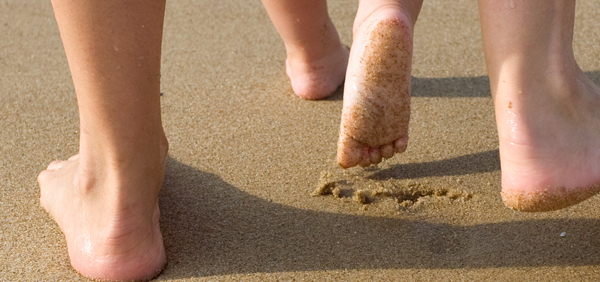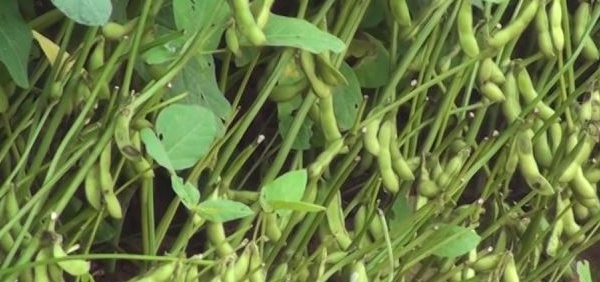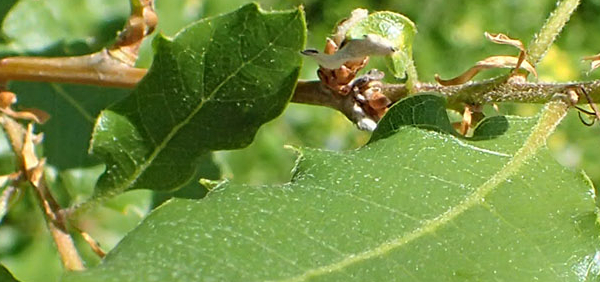alarka :
 Solanum trilobatum Linn (Family: Solanaceae) is one of the important medicinal plant, more commonly available in Southern India.Solanum trilobatum is an extensively used Indian traditional medicine to cure various human ailments. It was distributed throughout the southern parts of India. S. trilobatum is reported to cure numerous diseases viz., tuberculosis, respiratory problems and bronchial asthma. S. trilobatum was reported to harbour hepatoprotective activity, antimicrobial activity, antioxidant activity, cytotoxic activity, haemolytic activity, protective effect, immunomodulatory activity and antiinflammatory properties. Phytochemical screening showed the presence of carbohydrates, saponins, phytosterols and tannins in leaf, whereas, stem possess carbohydrates, saponins, phytosterols, tannins, flavonoids and cardiac glycosides as major phytochemical groups.
Solanum trilobatum Linn (Family: Solanaceae) is one of the important medicinal plant, more commonly available in Southern India.Solanum trilobatum is an extensively used Indian traditional medicine to cure various human ailments. It was distributed throughout the southern parts of India. S. trilobatum is reported to cure numerous diseases viz., tuberculosis, respiratory problems and bronchial asthma. S. trilobatum was reported to harbour hepatoprotective activity, antimicrobial activity, antioxidant activity, cytotoxic activity, haemolytic activity, protective effect, immunomodulatory activity and antiinflammatory properties. Phytochemical screening showed the presence of carbohydrates, saponins, phytosterols and tannins in leaf, whereas, stem possess carbohydrates, saponins, phytosterols, tannins, flavonoids and cardiac glycosides as major phytochemical groups. Taxonomical Classification
Kingdom: Plantae - Plants
Family: Solanaceae
VERNACULAR NAMES
Sanskrit: Alarka, Vallikantakaarika, Kantakaari-lata.English: Climbing Brinjal
Hindi: Kantakaari-lataa.
Telugu: Alarkapatramu, kondavuchinta, mullamustil.
Marathi: mothiringnee, thoodalam.
Oriya: Bryhoti
Tamil: Tuduvalai, Nittidam, Sandunayattan, Surai.
Malayalam: Padarchunda, Parachunda, Tootuvila
Kannada: Kakamunji, Ambusondeballi.
Synonyms
Synonyms in Ayurveda:Rasa: Kashaya Tikta
Guna: Laghu
Veerya: Sheetha
Phytochemistry:
Phytochemical Studies
Phytochemical screening of various extracts such as chloroform, ethanol, water of S. trilobatum revealed the presence of secondary metabolites such as Steroids, triterpenoids, sugars, Reducing sugars, phenolic compounds, tannins, anthroquinone, amino acids, Saponins [11]. Phytochemical analysis of dried powder of S. trilobatum leaves showed the presence of carbohydrates, saponins, phytosterols and tannins, where as the stem portion possess carbohydrates, saponins, phytosterols, tannins, flavonoids and cardiac glycosides. Alkaloides such as soladunalinidine and tomatidine(4) were isolated from the leaf and stem of Solanum species. S. trilobatum contains chemical compounds like Sobatum(1), β-solamarine, solasodine(2), solaine(3), glycoalkaloid and diosogenin
Morphology:
Solanum trilobatum Linn (Solanaceae), the nightshade, (order Solanales), with 102 genera and nearly 2,500 species. It is a prickly diffuse, bright green perennial herb, woody at the base, 2–3 m height, found throughout India, mostly in dry places as a weed along roadsides and waste lands. The plant having much branched spiny scandent shrubs. Leaves are deltoid or triangular, irregularly lobed. Flowers are purplish-blue, in cymes. Berry are globose, red or scarlet.General Use:
Traditional Uses
Plants are playing an important role in the health of millions of people’s life in many villages of India in their day to day life by its traditional usage. S. trilobatum is reported to cure numerous diseases viz., respiratory problems and bronchial asthma. S. trilobatum was reported to harbour hepatoprotective activity, antimicrobial activity, larvicidal activity, antidiabetic activity, cytotoxic activity and anticancer activity. The leaves and stem of S. trilobatum are reported to possess antimitotic, anti-inflammatory and anti-ulcerogenic properties. The leaf extracts are used to increase male fertility and to cure snake poison. It is used with ghee in siddha for treating tuberculosis, as decoction in case of acute and chronic bronchitis, root and berries for treating cough.The major alkaloids identified in the alcoholic extract from leaves and stem part of S. trilobatum has been shown to possess antimitotic and antimicrobial activity against bacteria and fungi. Biological screening of the alkaloid mixture of this plant revealed anticancer activity against certain type of cancer and its effectiveness as an adjuvant in cancer chemotherapy
Clinical trials:
Anti-microbial and Haemolytic Activity
In this study, the leaves and stem extracts of S. trilobatum were prepared in different polarity solvents (n-butanol, chloroform and methanol) and the dried plant extracts were used for the estimation of antimicrobial and hemolytic activity. The n-butanol extracts of S. trilobatum leaves and stem showed antimicrobial activity against all test organisms. Methanol extract of S. trilobatum leaves and stem showed antimicrobial activity against K. pneumonia and S. aureus respectively. Whereas, chloroform extract of S. trilobatum leaves and stem not showed any antimicrobial activity
Protective Effect
Protective effect of an aqueous leaf extract of S. trilobatum extract was examined against lead acetate Swiss albino mice. The oral administration of the above extract for 30 days against lead acetate affected mice significantly increased the levels of antioxidants (SOD, CAT, GPx) and decreased the level of lipid peroxidation (LPO). The results of the present study, for the first time, provide clear evidence of defence provided by S. trilobatum extracts against lead acetate induced toxicity in brains of albino mice
Anti-inflammatory
Methanol extracts of S. trilobatum Leaf were investigated for anti-inflammatory activity with acute and chronic models. In the doses of 100, 200 and 300 mg/kg exhibited significant (P < 0.05) anti-inflammatory activity in all the models tested. The methanol extracts of S. trilobatum Linn at 300 mg/kg showed maximum inhibition of 54.44% in carrageenan-induced rat paw oedema while the standard drug indomethacin was 57.08% after 3 hrs of carrageenan injection. On the other hand at 100, 200 and 300 mg/kg inhibited with dextran, histamine and serotonin-induced rat paw oedema significantly and dose dependently compared with control group. In the chronic inflammatory model, at a dose of 200 and 300 mg/kg inhibited the granuloma weight by 22.65%, whereas the indomethacin inhibited 28.37%
Oviposition Deterrent and Skin Repellent Activity
The leaf extract of S. trilobatum (Solanaceae) was tested under laboratory conditions for oviposition deterrent and skin repellent activities against the adult mosquito Anopheles stephensi. Concentrations of 0.01, 0.025, 0.05, 0.075 and 0.1% reduced egg laying by gravid females from 18 to 99% compared to ethanol-treated controls. In skin repellent tests, concentrations of 0.001, 0.005, 0.01, 0.015, and 0.02% provided 70 to 120 minutes protection against mosquito bites, whereas the ethanol control provided only 2.2 minutes of protection. Both oviposition deterrent and skin repellent activity were dose dependent. The results suggest that the leaf extract of S. trilobatum is an effective oviposition deterrent and skin repellent against A. stephensi
Anti-oxidant Activity
A chloroform extract of S. trilobatum was analysed and compared with reference antioxidants for its invitro antioxidative properities such as scavenging of a–diphenyl-b-picryl hydrazyl (DPPH) and superoxide radicals, protection to deoxy ribose degradation, reducing power, as well as inhibition of lipid peroxidation. When compared to the reference antioxidant butylated hydroxyl toluene (BHT), chloroform extract of S. trilobatum exhibited less scavenging effect of DPPH radicals and reducing power but a better superoxide radical scavenging effect. From a comparision of the hydroxyl radical scavenging effect of chloroform extract of plants with catechin, it seemed that chloroform extract was found four times effective than catechin. This was able to prevent the formation of OH- induced malondialdehyde (MDA) in rat liver homogenate
Anti-bacterial Activity
The antibacterial activity of aerial parts of S. triolobatum was assayed under in vitro conditions by agar disc diffusion and well diffusion method against four bacterial species. All the solvents, ethanol, acetone, ethyl acetate used for the extraction of leaves, flower and fruits were shown significant antibacterial activity except acetone and ethyl acetate extracts of flower against K. pneumoniae. Gram–positive bacteria S. aureus was more susceptible to inhibition when compared to the Gram-negative bacterial species tested. This is in agreement with previous reports that plant extracts are more active against Gram-positive bacteria than Gram negative bacteria. Amongst the Gram-negative bacteria P. aeruginosa was more susceptible to inhibition by the extracts when compared to other bacterial species tested. The inhibition of bacterial growth by S. triolobatum extracts was found to be significantly higher than that of standard antibiotics tested
Immunomodulatory Activity
Aqueous extract of leaves of S. trilobatum Linn (Solanaceae) was pharmacologically validated for its immunomodulatory properties in experimental animals. Oral administration of extract at dose of 100, 200 & 400 mg/kg significantly increased in percentage neutrophil adhesion (P < 0.001). The Delayed Type Hypersensitivity also showed a dose dependent activity (P < 0.001). Further, a dose related increase in heamagglutination antibody titer was observed with different doses as compared to control group. Carbon clearance test was conducted to establish phagocytic activity of reticuloendothelial system after treatment with aqueous extract. Phagocytic index was significantly increased after the administration of S. trilobatum compared to control group (P < 0.001). These findings suggested that the immunostimulatory activity of S. trilobatum influences by potentiating humoral as well as cellular immunity
Antidiabetic Activity
The study was conducted to evaluate the antihyperglycemic activity of the ethanolic extracts of S. trilobatum (STEt) leaves on blood glucose of albino rats. Diabetic rats had much reduced body weight than normal rats. Administration of the extracts at the dose of 400 mg/kg body wt./day resulted in a marked decrease in the levels of fasting blood glucose with a concomitant increase inody weight. S. trilobatum extract at 400 mg/kg was found to be comparable to glibenclamide. STZdiabetic rats reated with STEt (400 mg/kg) significantly reversed all these changes to near normal. These results suggest that STEt induce antihyperglycemic as well as antihyperlipidemic activities in STZ-diabetic rats
Research:
Phytochemical Studies
Phytochemical screening of various extracts such as chloroform, ethanol, water of S. trilobatum revealed the presence of secondary metabolites such as Steroids, triterpenoids, sugars, Reducing sugars, phenolic compounds, tannins, anthroquinone, amino acids, Saponins [11]. Phytochemical analysis of dried powder of S. trilobatum leaves showed the presence of carbohydrates, saponins, phytosterols and tannins, where as the stem portion possess carbohydrates, saponins, phytosterols, tannins, flavonoids and cardiac glycosides. Alkaloides such as soladunalinidine and tomatidine(4) were isolated from the leaf and stem of Solanum species. S. trilobatum contains chemical compounds like Sobatum(1), β-solamarine, solasodine(2), solaine(3), glycoalkaloid and diosogenin
- » Classification and names of alarka
- » Synonyms and definitions of alarka
- » Drug Properties of alarka
- » Chemical Constituents of alarka
- » Standardization of alarka
- » Parts used and Dosage of alarka
- » Morphology and Histology of alarka
- » Distribution and Conservation of alarka
- » Cultivation of alarka
- » alarka in the market
- » Medicinal Uses of alarka
- » Researches and clinical trails of alarka
- » alarka in other sytems of medicine
- » Ayurvedic formulations with alarka
- » Images of alarka














